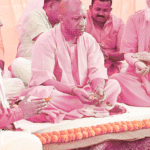In May 2025, India reported cases of two new COVID-19 variants, NB.1.8.1 & LF.7 Variant, sparking curiosity and concern. Detected in Tamil Nadu and Gujarat, these variants are part of the Omicron family, specifically tied to the JN.1 strain. The Indian SARS-CoV-2 Genomics Consortium (INSACOG) identified one case of NB.1.8.1 in April and four cases of LF.7 in May. While the World Health Organization (WHO) labels them as “Variants Under Monitoring,” they’re not yet a major worry. This article explores what these variants are, their spread, symptoms, and how to stay safe. With cases rising in Asia, understanding NB.1.8.1 & LF.7 Variant is key to staying informed without panic. Let’s explore the facts and see what they mean for you.
What Are NB.1.8.1 and LF.7 Variants?
NB.1.8.1 and LF.7 are new sub-variants of the Omicron strain, specifically linked to the JN.1 variant, which dominates in India, making up 53% of tested samples. NB.1.8.1 was first found in Tamil Nadu in April 2025, while four LF.7 cases appeared in Gujarat in May. The WHO classifies them as “Variants Under Monitoring,” meaning they’re being watched but aren’t major threats yet. NB.1.8.1 has mutations like A435S, V445H, and T478I, which may help it spread faster or dodge immunity slightly. LF.7, also a JN.1 offshoot, shows similar traits. Both cause mild symptoms, and current vaccines still work well against them, per health experts.
Where Were They Detected?
INSACOG reported one NB.1.8.1 case in Tamil Nadu in April 2025 and four LF.7 cases in Gujarat in May. These variants have also appeared in Asia, like China and Singapore, driving case spikes. In India, Kerala leads with 430 active cases, followed by Maharashtra (209) and Tamil Nadu (69). Other states like Delhi and Karnataka also report cases, but numbers remain low.
How They Differ from Other Variants
NB.1.8.1 and LF.7 come from JN.1, which is 1.5 times more infectious than earlier Omicron strains due to its L455S mutation. NB.1.8.1’s spike protein changes (A435S, V445H, T478I) make it spread easier and slightly evade immunity. LF.7 shares similar traits but is less studied. Unlike Delta, which caused severe illness, these variants lead to milder cases, with no major rise in hospitalizations.
Symptoms and Health Impact
The NB.1.8.1 & LF.7 Variant cause symptoms like earlier Omicron strains: sore throat, mild cough, fever, fatigue, headache, and runny nose. Some report nausea or stomach issues. Most cases are mild, treated at home, and don’t lead to severe illness, especially in vaccinated people. The WHO says NB.1.8.1 poses a low global health risk, with no evidence of higher death rates. However, older adults or those with health conditions like diabetes or heart disease should stay cautious, as they’re more at risk for complications.
Common Symptoms to Watch For
Look out for fever, dry cough, sore throat, tiredness, and nasal congestion. Some may experience loss of taste or smell, headaches, or mild stomach problems. These symptoms mirror a cold or mild flu and usually resolve in a week. If symptoms worsen, especially breathing issues, contact a doctor. Vaccinated people often have milder symptoms, but boosters are key for protection.
Who Is at Risk?
Elderly people, those with weak immune systems, or conditions like cancer or heart disease face higher risks from NB.1.8.1 and LF.7. Pregnant women and kids should also take care. Most healthy, vaccinated people recover easily, but waning immunity means boosters are vital. Health experts urge high-risk groups to avoid crowded places and wear masks.
How These Variants Spread
NB.1.8.1 and LF.7 are highly transmissible, likely due to spike protein mutations that help them bind to human cells better. NB.1.8.1, in particular, has driven surges in China and Hong Kong, comprising 5-30% of sequenced samples globally. In India, cases rose to 1,009 by May 26, 2025, with Kerala and Maharashtra as hotspots. The variants spread through close contact, like coughing or sneezing, in crowded areas. Waning immunity and uneven booster uptake contribute to their spread, but current vaccines still reduce severe outcomes.
Why Cases Are Rising
Cases are climbing due to NB.1.8.1 and LF.7’s ability to spread faster, especially in areas with low booster rates. In India, 257 active cases were reported by May 19, jumping to 1,009 by May 26, with 750 new cases in a week. Global surges in Singapore and China show similar patterns. Improved testing also detects more cases, but most remain mild.
Global Spread and Concerns
NB.1.8.1 is dominant in China and Hong Kong, causing hospital visits to rise. It’s also spreading in the U.S. and Europe, making up 5-30% of cases. LF.7 has peaked in some areas but remains active in Asia. The WHO notes no severe outcomes, but countries like Taiwan are stockpiling vaccines. Global monitoring continues to track their spread.
Are Vaccines Still Effective?
Current COVID-19 vaccines, including boosters, remain effective against NB.1.8.1 and LF.7, especially in preventing severe illness. Experts say boosters cut symptomatic infections by 50% and severe cases by up to 80%. India has given over 2.2 billion vaccine doses, but booster uptake is spotty, especially among vulnerable groups. The WHO confirms these variants don’t fully evade immunity from vaccines or past infections. Health officials urge high-risk groups to get boosted and follow precautions like mask-wearing to stay safe.
Vaccine Protection Details
Vaccines target the spike protein, where NB.1.8.1 and LF.7 have mutations. Despite this, they still protect against severe disease, reducing hospitalization risk by 80%. Boosters are crucial for older adults or those with health issues. In India, uneven booster coverage has led to calls for better outreach. Check with local health centers for booster availability.
Booster Recommendations
Health experts recommend boosters every 6-12 months, especially for those over 60 or with conditions like diabetes. In India, vaccine hesitancy and access issues slow booster uptake. Dr. Arup Halder from Kolkata stresses that boosters are key to maintaining immunity against NB.1.8.1 and LF.7. Visit government clinics or hospitals to schedule your shot.
How to Stay Safe
To protect against NB.1.8.1 & LF.7 Variant, wear masks in crowded places, wash hands often, and avoid large gatherings if you’re at risk. Get vaccinated or boosted, especially if you’re elderly or have health issues. India’s health ministry advises testing if you have symptoms and isolating at home if positive. Hospitals are ready with beds and medicines, but most cases don’t need admission. Stay updated via trusted sources like the WHO or INSACOG to avoid misinformation and keep calm.
Practical Safety Tips
Wear a well-fitted mask in public transport or markets. Wash hands for 20 seconds or use sanitizer. Avoid touching your face, and cover coughs with a tissue. If you feel sick, test for COVID-19 at a local clinic and stay home. These steps reduce transmission of NB.1.8.1 and LF.7, keeping you and others safe.
Testing and Isolation
If you have symptoms like fever or cough, get an RT-PCR test at a health center. Home test kits work too, but confirm positives with a lab. Isolate for 5-7 days if you test positive, and inform close contacts. India’s health system is monitoring cases, with dedicated wards ready if needed. Early testing helps control spread.
India’s Response to the Variants
India’s health ministry and INSACOG are actively tracking NB.1.8.1 and LF.7 through genome sequencing. States like Kerala, Maharashtra, and Gujarat have issued advisories, urging masks and boosters. Hospitals in Ghaziabad and Thane have set up COVID wards, and testing kits are widely available. The government says there’s no need to panic, as cases are mild and manageable. However, they’re preparing for potential surges by ensuring medicine and oxygen stocks. Public cooperation is key to keeping the situation under control.
Government Actions
The Health Ministry is boosting surveillance and sequencing to monitor NB.1.8.1 and LF.7. States like Karnataka and Delhi have issued health advisories, while Kerala is testing widely. Hospitals are equipped with 19-bed wards, like in Thane, and oxygen supplies are ready. The government urges calm but stresses vaccination and hygiene.
Public Health Advisories
Kerala, with 430 cases, advises masks in crowded areas. Maharashtra and Tamil Nadu urge boosters for the elderly. Delhi’s advisory focuses on testing and isolating. The ministry encourages reporting symptoms early and avoiding misinformation. Check official sites like the Health Ministry or WHO for updates to stay informed and safe.



